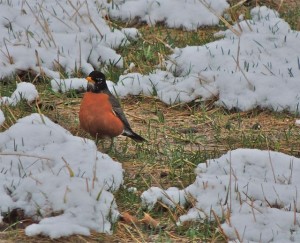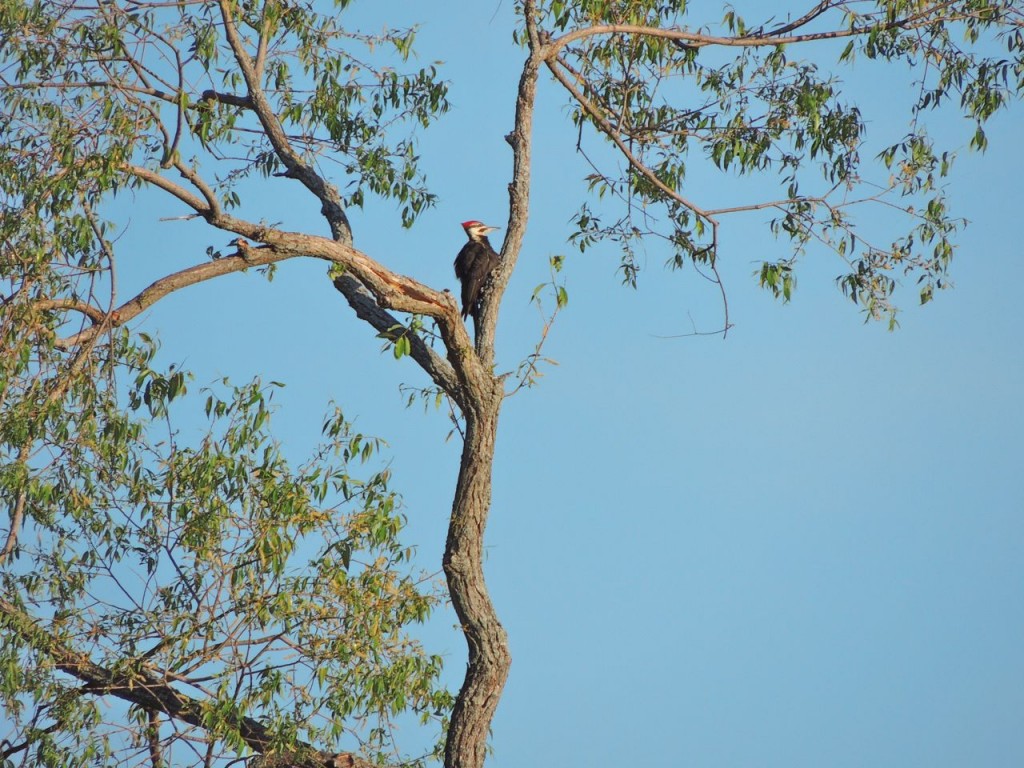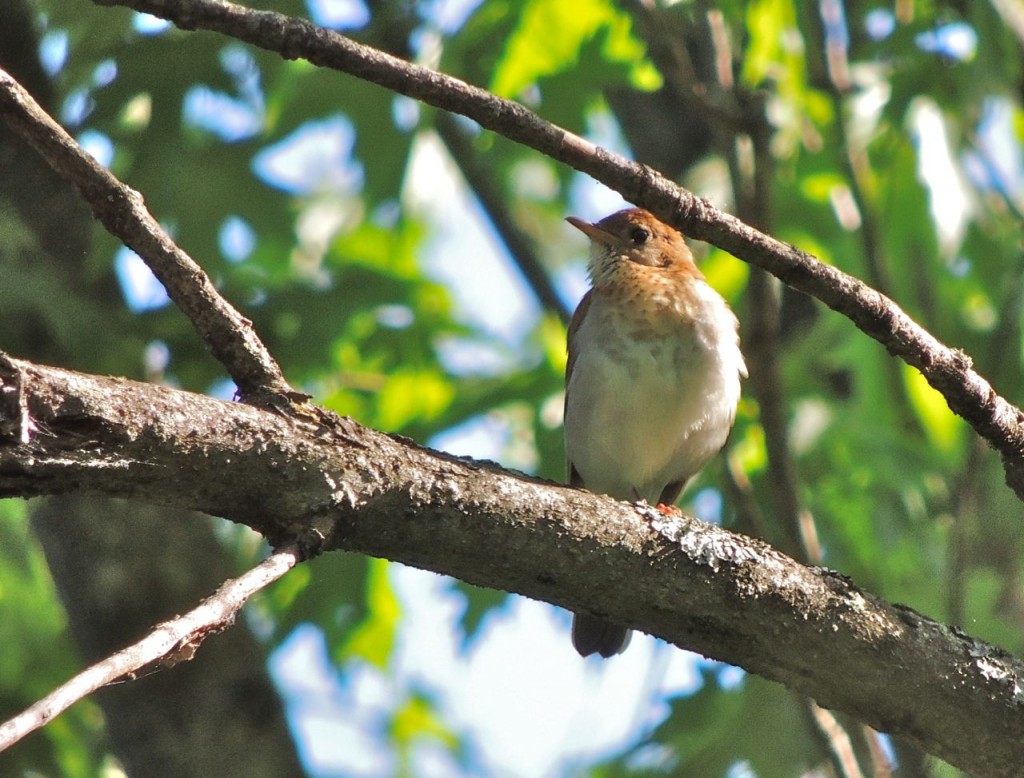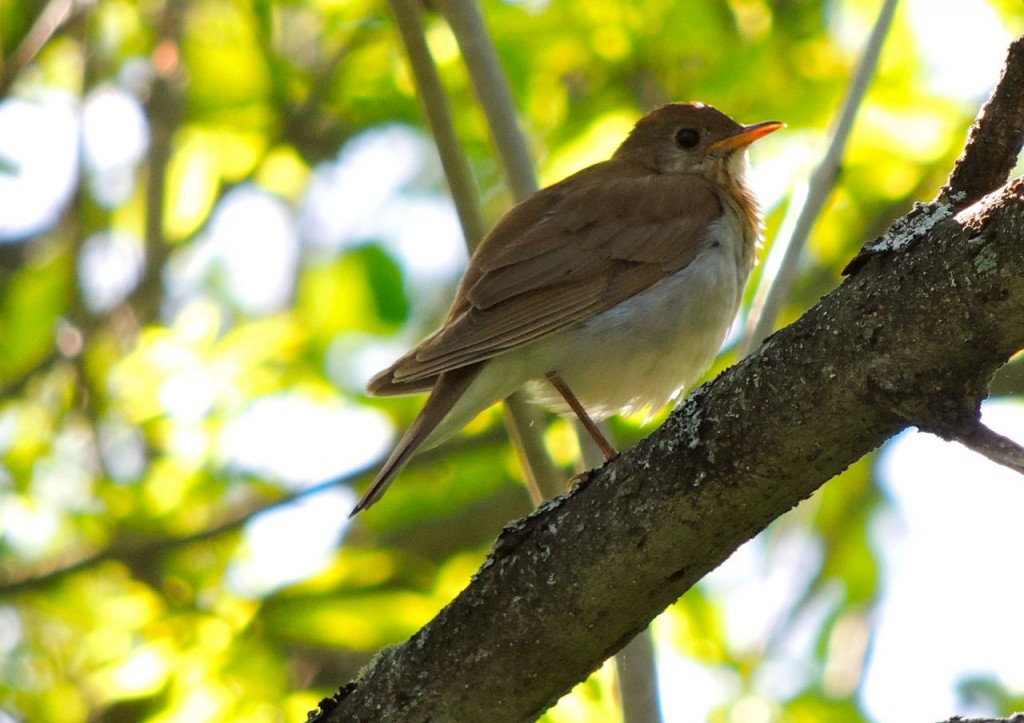31May 2014. Kirkwall ON. My diary tells me that on April 15th, just six weeks ago, it was snowing at sunrise. (And as some sort of proof here’s a photo taken that day.)

Now, after a stuttering catch-up spring we are sampling summer. For our migrants their rush hour is over; well, cuckoos and Blackpoll Warblers are still moving through, but the greater effort now goes into rearing the next generation.
Early this morning, I drove out into deep countryside listening for the dawn chorus, there was hardly anyone else on the roads. As a child, my dad shared dawn choruses with me. On our bikes, he and I pedaled down fragrant country lanes sorting out the full volume songs of Missel Thrushes, Blackbirds and Skylarks. Continuing that always satisfying experience, my plan this morning was to visit three different locales each with its own birdy potential: a large hay field bounded on three sides by woodland, a favourite cattail marsh and a commanding hilltop with a walk down into a swamp.
It was at the marsh that I found a Pileated Woodpecker. We’d seen it there a little over a week ago, in fact at the same place on the same drowned tree and doing the same thing, drumming loudly on a reverberant limb to broadcast its territorial claim. I was looking for other birds: Sora, Virginia Rails, Least Bitterns and the like, but the Pileated Woodpecker seemed uncharacteristically determined to be watched and photographed; and since none of the other target birds showed themselves I fell for this elegantly outsized woodpecker.

They are always an arresting encounter Pileated Woodpeckers, all the more so because they seem to give humans a wide berth. Even if you don’t see them you’ll often hear them from far off, they have a yodeling laugh a bit like a Northern Flicker but louder, clearer and more penetrating. They are a large bird, books say the size of a crow, but In flight they always appear quite a bit larger than that, and certainly heavier; while crows fly lightly and easily, Pileated Woodpeckers flap strongly with an almost urgent effort greater than that required to avert an imminent fall to earth.
Later, walking along a mosquitoey trial through a wooded swamp, I heard and then soon found this Veery calling, apparently in answer to another some distance away. The Veery is one of a handful of buff-brown thrush species that come here for the summer to raise their broods on a diet of mosquitoes. It seemed quite unconcerned by my presence, although I would have preferred it to move somewhere just as close, remaining well lit but against an evenly dark background. But then photography was my problem not its.


Ya, I love being outside before ‘everyone’ gets up and sings, buzzes, scurries…